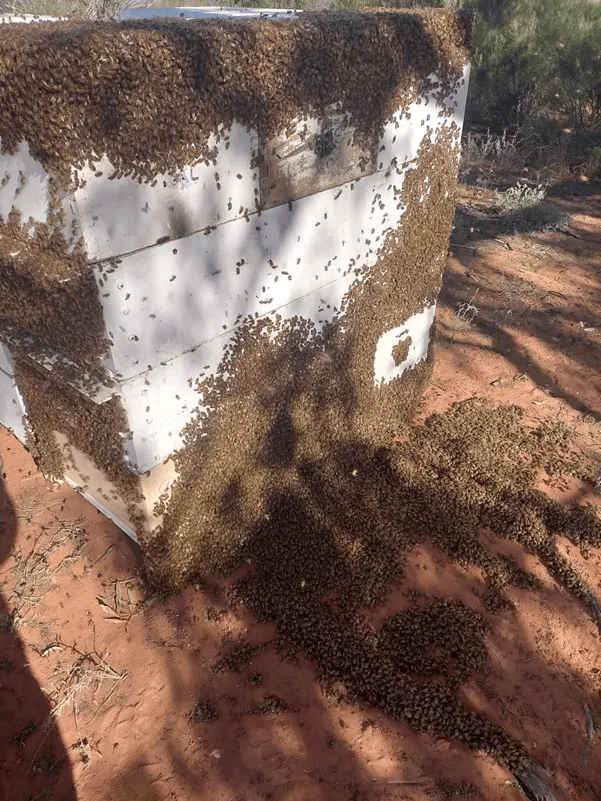A while ago I talked about the phenomenon called ‘Bees Events’, and people keep asking me “How do we know when we see one?”. Well, interestingly each time we see a different behaviour, or a different process appears out of the blue as the bees do something different, and we should assume that something special is happening. Have a look at these photos, do you see something remarkable?

These hives have been experiencing a boom population. At spring time, some of the hives will have a slow swarm hanging by the hive. Here we see a massive size swarm, already hanging outside the hive, as there is simply no room inside. The bees are waiting for their queens to hatch and mate, before they can fly away to a new home.
But what is the event and why is it happening now? It’s not spring yet, spring is a month away, and we know that swarms should be coming out only at the best possible conditions given by mother nature. Interestingly, the bees “know” that spring is coming early this year, and so is summer, but that’s not all the information the bees “know”. How do they know there will be enough food and flowers to maintain the five times bigger swarm than usual? Do bees gamble? No, they do not gamble. Bees have the natural tendency to know and plan their capacity. Throughout the year, bees know how to maintain the size of their swarm to as close as possible to the productive level, when nectar and pollen will be in abundant, and the bees will gain the most out of it.
This year we are seeing an event rolling out, and it’s going to be amazing…. So stay tuned for more details about this spring’s upcoming event – coming soon.




